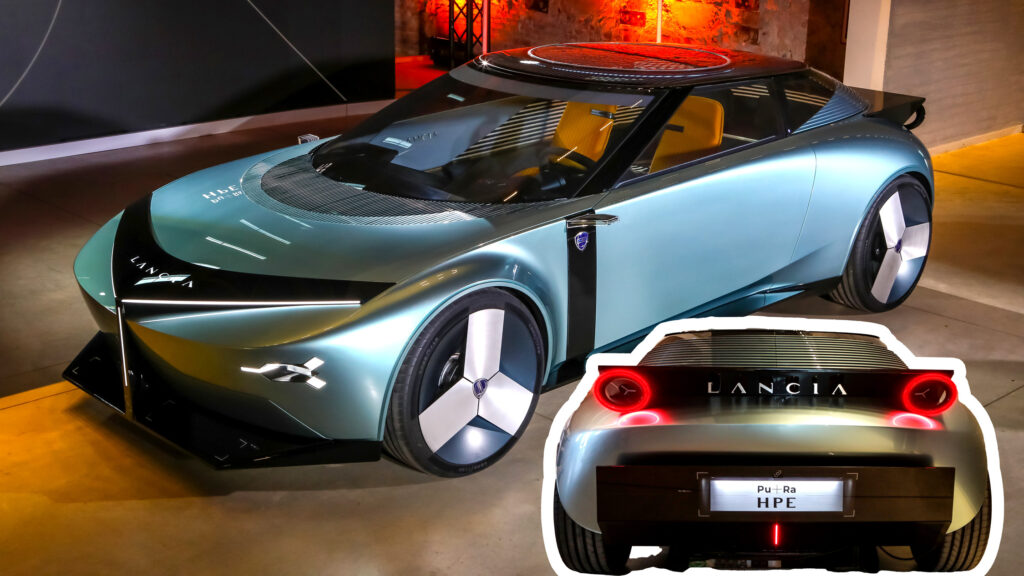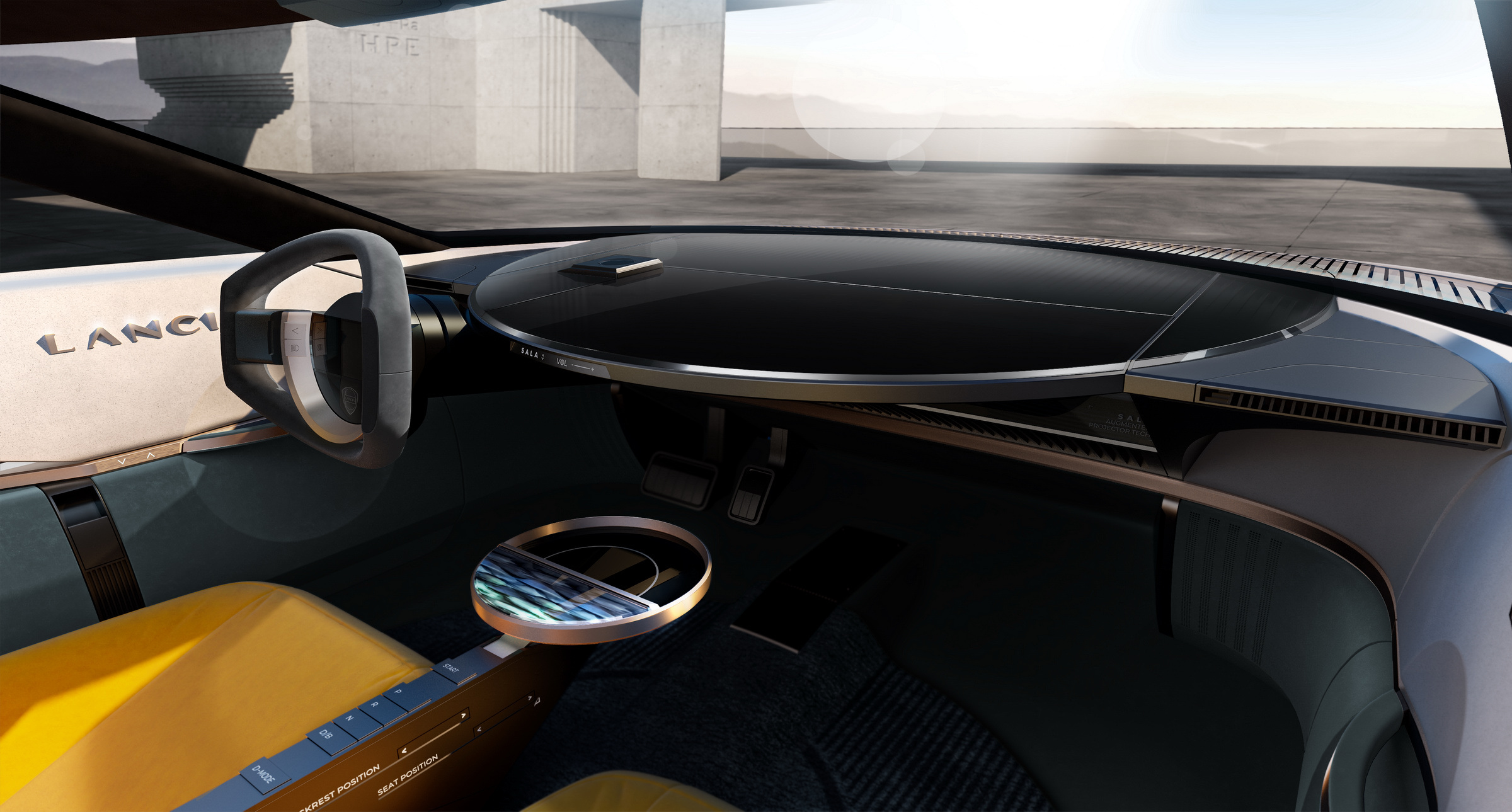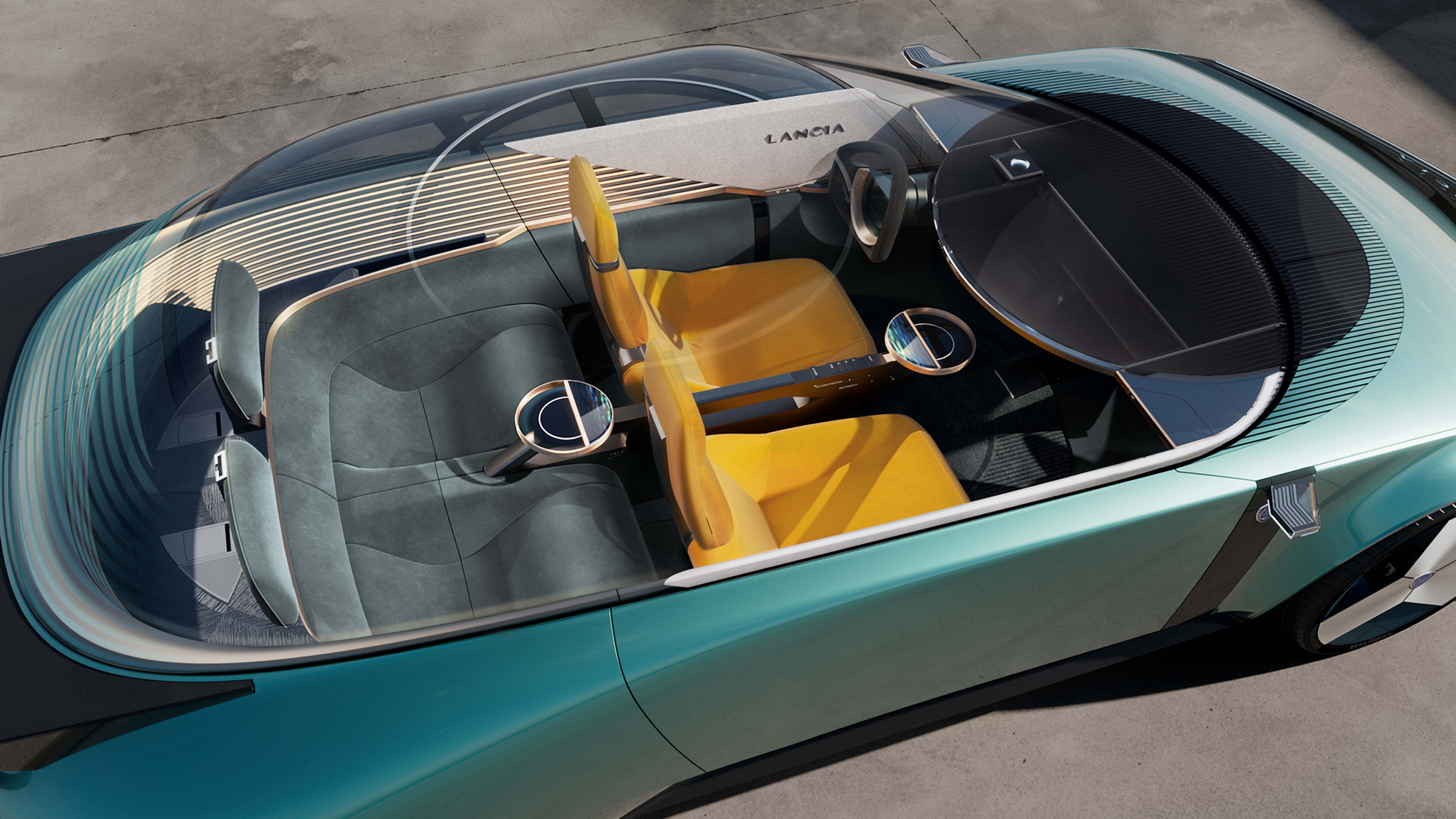Lancia has just unveiled the Pu+Ra HPE concept, kicking off their new wave of electrification. The high-performance electric coupe takes design inspiration from iconic cars such as the Stratos, Beta, and Flaminia, while also providing us with a look at what future Lancias might look like.
The name “Pu+Ra” comes from the company’s new pure and radical design language, while “HPE” stands for “High Performance Electric”, a nod to the Beta HPE of the 1970s, whose designation originally stood for “High Performance Estate”.
More: These Are The Lancia Classics That Will Inspire The Upcoming Ypsilon, Aurelia, And Delta
Much like the iconic Stratos was inspired by the abstract Stratos Zero concept that came before it, the Pu+Ra HPE draws design influence from the Pu+Ra Zero sculpture presented last November.
The three-pointed light signature at the front is said to be a reinterpretation of the brand’s signature grille, and the motif can be seen carried over to other parts of the car such as the wheel covers. The rear end of the car, with its steep precipice of a decklid and circular taillights, was directly inspired by the Stratos. Even the concept’s paint color, a hue called “Progressive Green”, is said to represent the car’s forward-looking sustainable vision while also being a modernized version of the Flaminia’s Azzurro Vincennes.
The car’s interior is supposed to provide occupants with a “home feeling”, and as such, Lancia has partnered with Italian furniture company Cassina for the cabin design. Inspired by contemporary interior design with its simple, flowing forms, the space is said to evoke the feel of a classic Italian home. Some of the key design elements include seats inspired by one of Cassina’s more iconic armchairs, a round table and round carpets, as well as warm, comfy materials such as wood, wool, and nubuck to help add to the overall “home feeling” atmosphere.
The cabin also features a host of sustainable materials in keeping with the concept’s eco-friendly ethos. The seats, for instance, are upholstered in a velvet blend with low amounts of chemical processing, while the table is made of a bio-based cellulose acetate, and the door cards are finished in a unique material that combines marble dust waste with recycled fabric.
On the topic of sustainability, more than anything, the Pu+Ra HPE represents the beginning of Lancia’s electrification strategy, which will start with the new Ypsilon in 2024, followed by only electric launches from 2026 onward. In 2028, a new Delta will arrive, and by that time, the Italian automaker plans to be selling exclusively electric vehicles.
More: Everything We Know About The Lancia Delta’s 2028 Electric Revival
The Pu+Ra HPE actually uses the motor, battery, suspension, and brakes from the upcoming Ypsilon as a testbed to prove the validity of the platform, which should prove to be promising given the theoretical specs. Lancia is targeting a range of over 700 km (435 mi), a zero-to-full charging time slightly over 10 minutes, and an energy consumption of less than 10 kWh per 100 km (62 mph). To aid in these impressive numbers, the car’s streamlined design is aided by low-drag digital mirrors and aerodynamic wheels with Goodyear tires designed especially for this vehicle.
Finally, there’s the new S.A.L.A. (Sound Air Light Augmentation) user interface, which aims to personalize the road experience for drivers and passengers alike through intelligent adaptation of the vehicle’s atmosphere based on occupants’ moods and habits. The car’s audio, climate control, and lighting functions can all be adjusted simply by pressing a button or uttering a few words, and this is thanks to Chameleon and TAPE (Tailored Predictive Experience) technologies. All these systems will make their production debut in the new Ypsilon, then eventually expand to other vehicles in the Stellantis portfolio, evolving to best fit each vehicle they’re installed in.









































